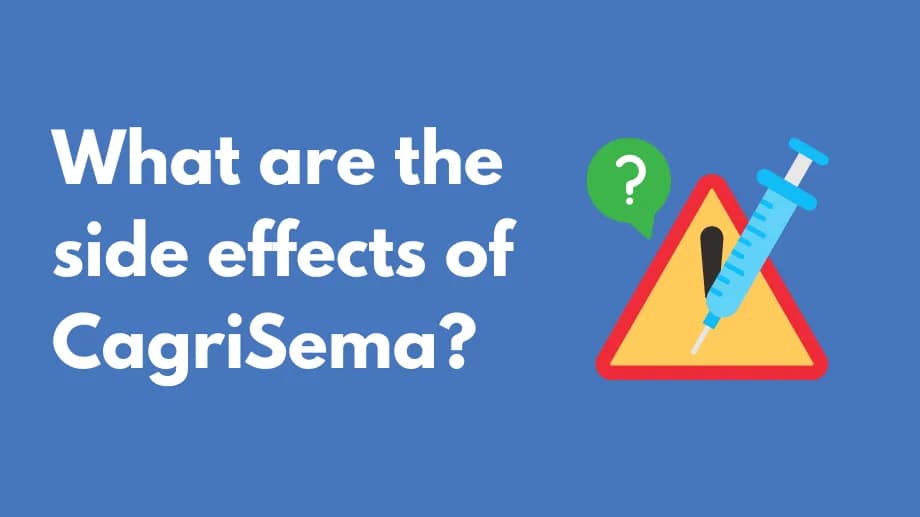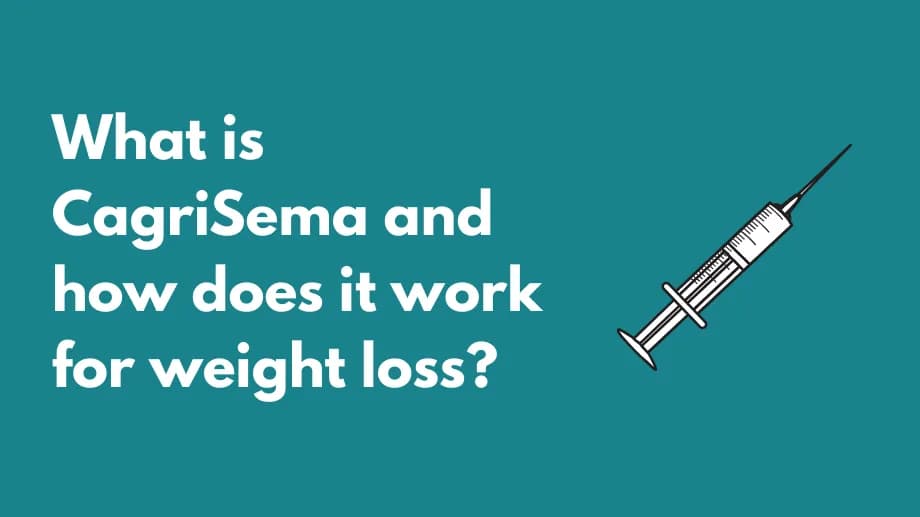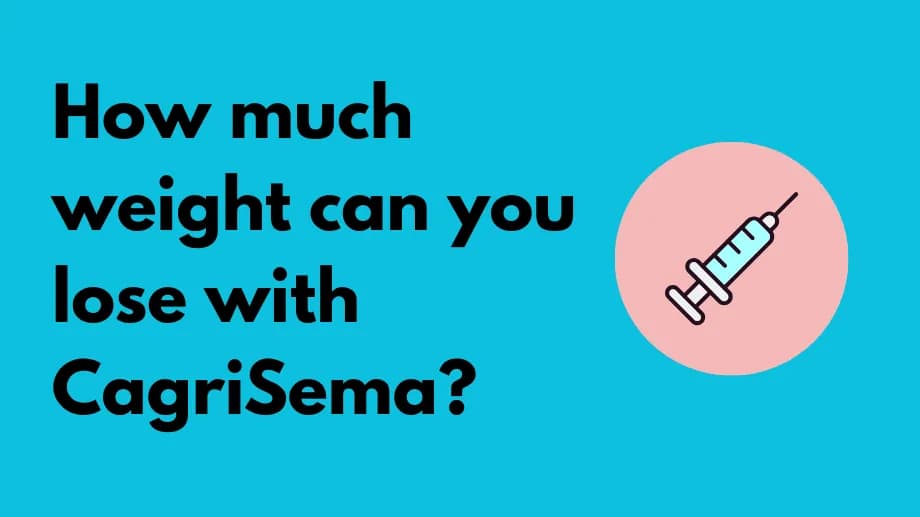How much weight can you lose with cagrisema?

Since Ozempic came to market in 2017 to treat type 2 diabetes, drugmakers Eli Lilly and Novo Nordisk A/S have been competing to develop next-generation diabetes and weight loss drugs.
Novo’s newest entry is a fixed-dose combination drug called CagriSema. It combines semaglutide, the GLP‑1 receptor agonist found in Ozempic and Wegovy, with cagrilintide, a long-acting amylin analogue. Like other GLP‑1 drugs, CagriSema is a once-weekly subcutaneous injection.
But is it as effective as these GLP‑1 drugs for weight loss? Read on to find out.
Clinical trial results
Clinical trials have shown significant weight loss and A1C improvements.
- REDEFINE‑1 (Phase 3): Over 3,400 adults with obesity or overweight (no T2DM) lost 22.7% of baseline body weight after 68 weeks, versus 12% with cagrilintide alone, 16% with semaglutide alone, and 2.3% on placebo.
- REDEFINE‑2: Over 1,200 adults with T2DM and obesity/overweight achieved 15.7% weight loss after 68 weeks among adherent patients (3.1% with placebo). Average loss regardless of adherence was 13.7%. A ≥5% weight reduction was seen in 89.7% of CagriSema recipients versus 30.3% on placebo.
Further studies include REDEFINE 3 (heart benefits vs placebo in adults with heart disease) and REDEFINE 4 (84-week head-to-head vs tirzepatide 15 mg).
CagriSema side effects
CagriSema is generally well tolerated. The most common adverse events were mild to moderate gastrointestinal effects:
- Stomach pain
- Nausea
- Vomiting
- Diarrhea
- Constipation
When will CagriSema be on the market?
Novo Nordisk plans to file for FDA approval in the first quarter of 2026.
Sources
- Novo Nordisk’s next-gen obesity drug CagriSema had investors excited. Now they’re not so sure. CNBC. Accessed May 28, 2025.
- Frias, Juan P et al. Efficacy and safety of co-administered once-weekly cagrilintide 2.4 mg with once-weekly semaglutide 2.4 mg in type 2 diabetes: a multicentre, randomised, double-blind, active-controlled, phase 2 trial. The Lancet, Volume 402, Issue 10403, 720–730. Accessed May 28, 2025.


